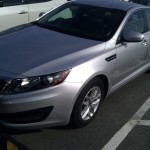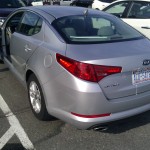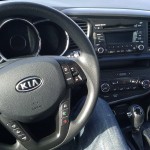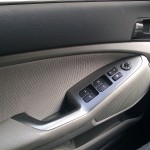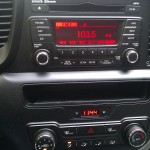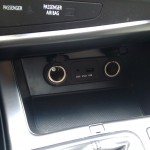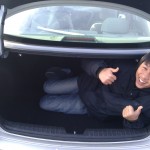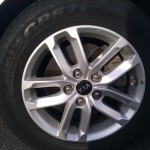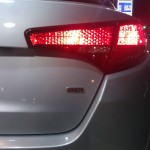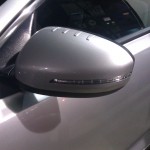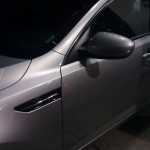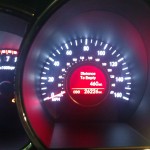Review: 2012 Kia Optima
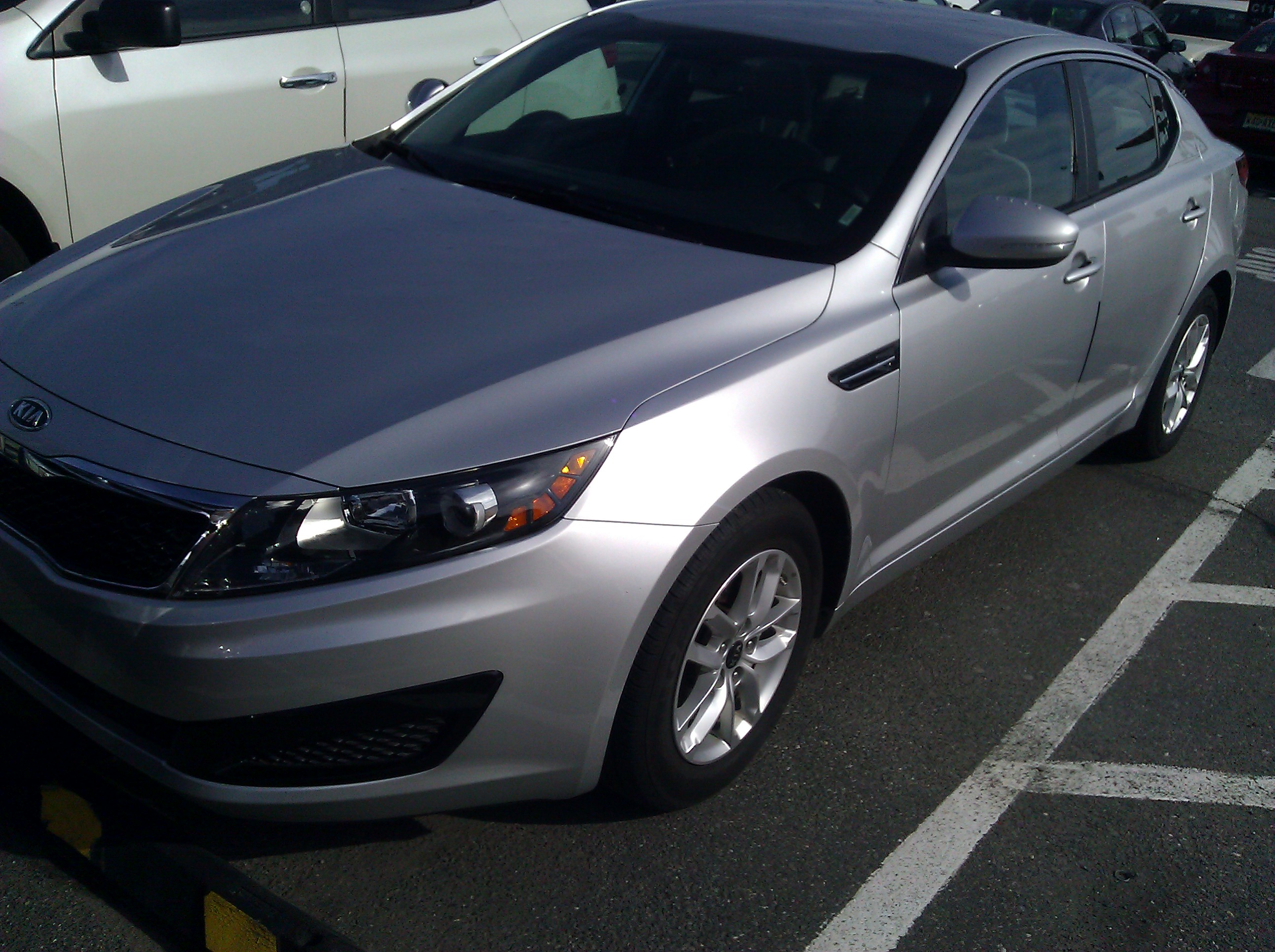
Kia wants you to forget its bland past portfolio and cross shop its new Optima with perenial best-sellers like the Toyota Camry and Honda Accord. On paper, the new 2012 Optima stays true to the Korean brand’s mantra of big bang for the buck. The stunning exterior looks is guaranteed to make passerbys do a double take. But are good looks, high value, and a ten year powertrain warranty enough to get past the stigma of owning a Kia? Click past the jump for a road trip road test.
Styling
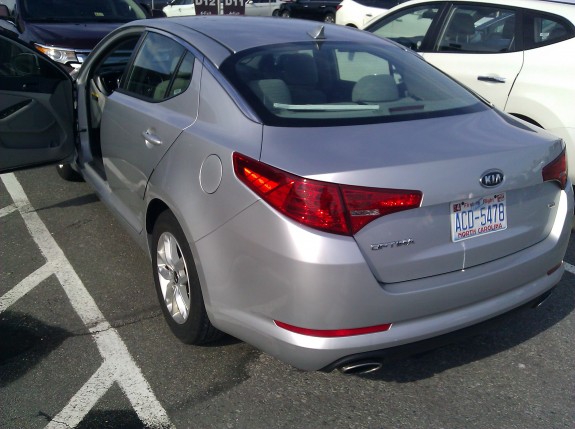 The last Optima was so forgettable that you’d be hard pressed to remember it even if you owned one. Fortunately, Kia remedied this flaw by poaching Audi’s chief designer Peter Schreyer. Within one product cycle, Schreyer transformed the Kia lineup from lumps of beige to stylish fashion statements. The new Optima is the best interpretation of Kia’s “Tiger Shark” design language. When viewed from the front, Kia’s blacked out grill looks like a smiling shark ready to eat up the asphalt. Surrounding the grill are a pair of mean looking headlamps that smoothly wrap upwards into the flared out front fenders. While photogenic, the low profile luxury rims are just asking to be curbed. In profile, the Optima avoids the current trend of flared surfaces, opting instead to uses a strong shoulder line that flow into the triangular tail lamps. The roofline is more coupe than sedan, drawing the viewer’s eyes to the high rear deck with a single strip of chrome. The black rear valence helps to slim down the Optima’s rump, and a single exhaust tip pokes out in base trims, with dual chromed tips used on higher trims. Overall, this Kia looks more European than Korean, and much more expensive than its $21,000 base MSRP would suggest.
The last Optima was so forgettable that you’d be hard pressed to remember it even if you owned one. Fortunately, Kia remedied this flaw by poaching Audi’s chief designer Peter Schreyer. Within one product cycle, Schreyer transformed the Kia lineup from lumps of beige to stylish fashion statements. The new Optima is the best interpretation of Kia’s “Tiger Shark” design language. When viewed from the front, Kia’s blacked out grill looks like a smiling shark ready to eat up the asphalt. Surrounding the grill are a pair of mean looking headlamps that smoothly wrap upwards into the flared out front fenders. While photogenic, the low profile luxury rims are just asking to be curbed. In profile, the Optima avoids the current trend of flared surfaces, opting instead to uses a strong shoulder line that flow into the triangular tail lamps. The roofline is more coupe than sedan, drawing the viewer’s eyes to the high rear deck with a single strip of chrome. The black rear valence helps to slim down the Optima’s rump, and a single exhaust tip pokes out in base trims, with dual chromed tips used on higher trims. Overall, this Kia looks more European than Korean, and much more expensive than its $21,000 base MSRP would suggest.
Interior
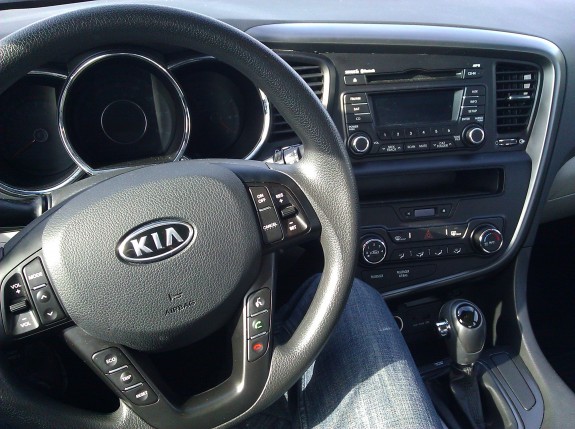 Stepping inside, the Optima’s center console is canted towards the driver to suggest sportiness. On the other hand, the lightly bolstered and wide flat seats suggest otherwise. All visible materials soft and tight fitting, with the exception of the area next to my right knee. The instrument cluster aims for a classic look rather than avant-garde with easy to read white on black text recessed in chrome rimmed binnacles. Extra information is displayed in red and green that Santa would approve of. My 5’11″ tall brother sat in the back and found rear legroom to be acceptable, but not as lounge worthy as my 2006 Scion xB. He also noted the usefulness of the cupholders hidden in the rear center armrest.
Stepping inside, the Optima’s center console is canted towards the driver to suggest sportiness. On the other hand, the lightly bolstered and wide flat seats suggest otherwise. All visible materials soft and tight fitting, with the exception of the area next to my right knee. The instrument cluster aims for a classic look rather than avant-garde with easy to read white on black text recessed in chrome rimmed binnacles. Extra information is displayed in red and green that Santa would approve of. My 5’11″ tall brother sat in the back and found rear legroom to be acceptable, but not as lounge worthy as my 2006 Scion xB. He also noted the usefulness of the cupholders hidden in the rear center armrest.
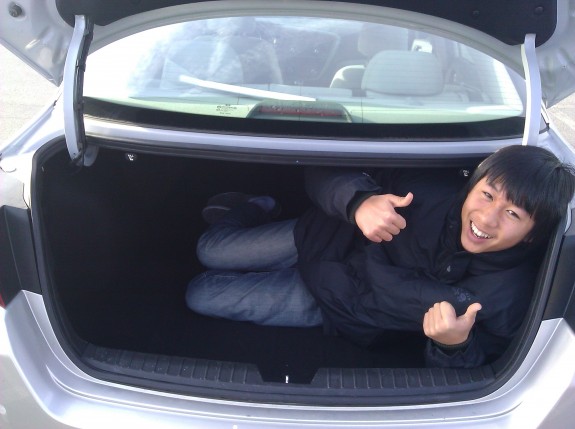 Out back, the 15.4 cubic feet trunk had no trouble fitting both of our tall lanky bodies – our mother might’ve also fit, but she didn’t approve of our testing methods, and did not participate.
Out back, the 15.4 cubic feet trunk had no trouble fitting both of our tall lanky bodies – our mother might’ve also fit, but she didn’t approve of our testing methods, and did not participate.
Equipment
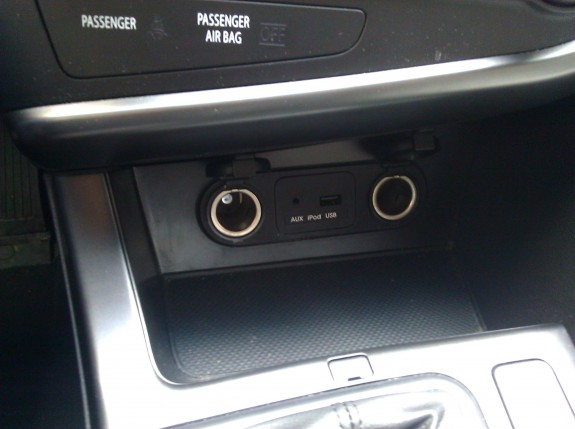 Bluetooth is quickly becoming as ubiquitous as FM radios in cars, and the Optima is already on the bandwagon. Standard on every trim, the bluetooth was easy to pair with my Android phone (only when the vehicle is not moving), but completely useless in recognizing my voice when attempting to dial by name. The speakers on this base model left much to be desired, sounding weak and hollow no matter how it was adjusted. On the plus side, the standard USB port was easily accessible at the bottom of the center console and had enough space to hold my phone and play Pandora radio throughout the trip. The steering wheel had convenient redunant controls for the radio, cruise control, and bluetooth access.
Bluetooth is quickly becoming as ubiquitous as FM radios in cars, and the Optima is already on the bandwagon. Standard on every trim, the bluetooth was easy to pair with my Android phone (only when the vehicle is not moving), but completely useless in recognizing my voice when attempting to dial by name. The speakers on this base model left much to be desired, sounding weak and hollow no matter how it was adjusted. On the plus side, the standard USB port was easily accessible at the bottom of the center console and had enough space to hold my phone and play Pandora radio throughout the trip. The steering wheel had convenient redunant controls for the radio, cruise control, and bluetooth access.
Ride and Handling
Even with the weak speakers, I kept Pandora on throughout the entire trip to mask the wind noise emanating from the A-pillar. The chassis felt solid and composed, but there was just not enough sound insulation to make the Optima a comfortable long distance cruiser. The Kia had surprisingly low body roll in turns and also exhibited less brake dive than expected from a family sedan. Unfortunately, this comes at the expense of a stiff ride that borders on crashy; My spine personally met every pothole in Manhattan after the suspension failed to soak up any of them. The problem is likely worse with the optional larger wheels. The steering felt light, but not more so than competitors, with little feedback from the front wheels. The Kia would’ve felt most at home on a smooth freeway if not for the large amount of wind noise. The 2.4L direct injected four cylinder made good use of its 200hp and 186 lb-ft of torque when paired with the 6-speed automatic. The transmission shifts smoothly in normal driving, but is reluctant to downshift when passing. There is a manual gate override, but the 4-cylinder sounds unhappy when pushed, so I left it in drive.
Economy
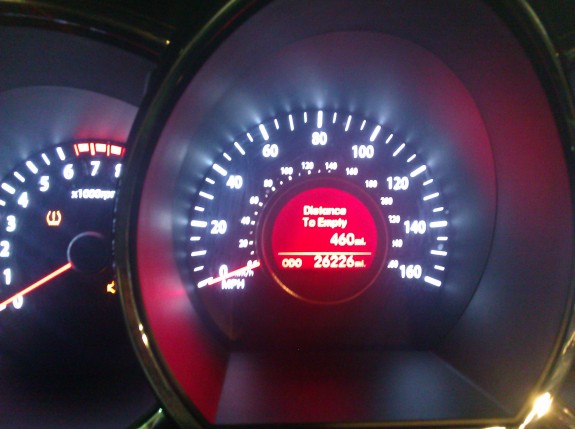 Over four states and 800+ miles, I managed to average 32 MPG the first tank in mixed driving and 30 MPG the 2nd tank in mostly freeway driving with some rolling hills – on par with the EPA estimated 24/35 MPG. The trip computer claims 460 miles between refills for its 18.5 gallon gas tank, making the Kia a good long distance cruiser. The Optima also includes a green “Eco” button that did absolutely nothing except turn on a light in the dash. Maybe it hestiated more to shift, but otherwise it was more of a green marketing gimick than a real feature. Ignoring the Eco button, the 3,200 lb Optima still delivered good fuel economy, just when fuel prices are on the rise.
Over four states and 800+ miles, I managed to average 32 MPG the first tank in mixed driving and 30 MPG the 2nd tank in mostly freeway driving with some rolling hills – on par with the EPA estimated 24/35 MPG. The trip computer claims 460 miles between refills for its 18.5 gallon gas tank, making the Kia a good long distance cruiser. The Optima also includes a green “Eco” button that did absolutely nothing except turn on a light in the dash. Maybe it hestiated more to shift, but otherwise it was more of a green marketing gimick than a real feature. Ignoring the Eco button, the 3,200 lb Optima still delivered good fuel economy, just when fuel prices are on the rise.
Summary
This new Kia Optima fixes the major problem from the last generation: styling. In fact, this Kia looks so good that even its corporate sibling, the Hyundai Sonata, looks drab in comparison. But as much I wanted to like this car, looks can only take you so far. The long list of standard equipment and good fuel economy are noteworthy, but the harsh ride and noisy cabin was a personal deal breaker. Kia has really kicked it up a notch in the family sedan segment, and this Optima is worth a serious look if you’re considering a stylish and sensible alternative to a Camcord.


